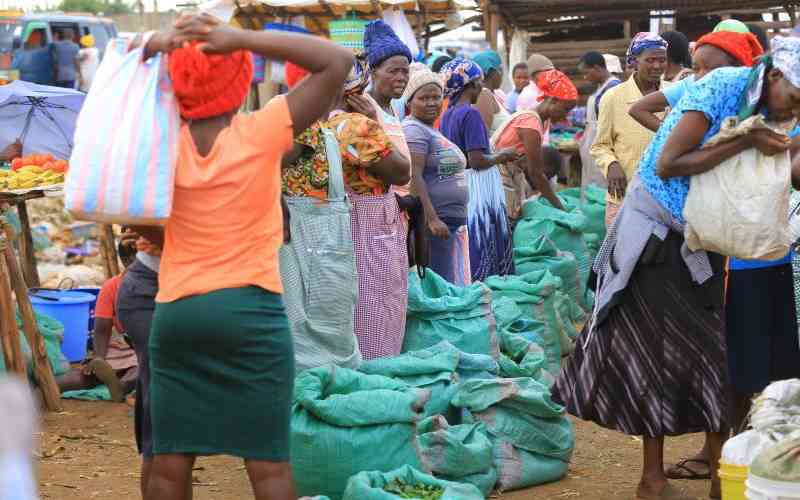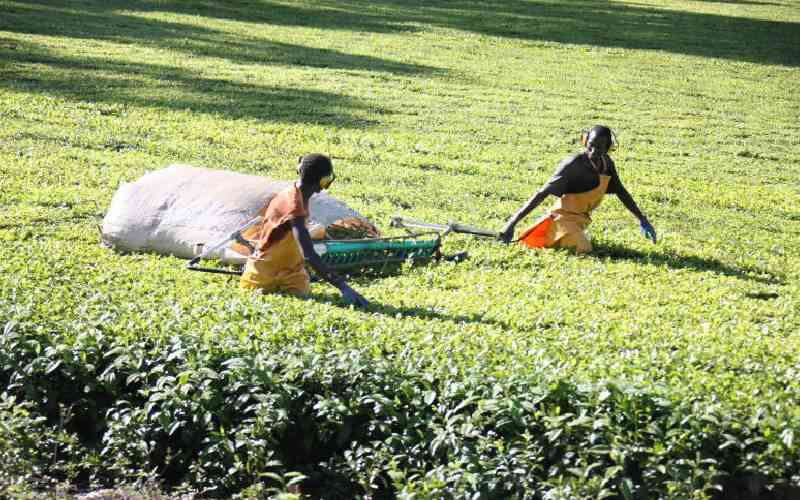
Empowering women with resources and opportunities not only enhances their own well-being but also significantly improves children’s health and community development.
This is according to two new reports released at the just-concluded 2025 Devolution Conference held in Homa Bay County.
The reports, titled “Brighter Futures: Breaking Cycles of Poverty for Children in Kenya” and “Women’s Empowerment Index (WEI) in Kenya”, were spearheaded by the Kenya National Bureau of Statistics (KNBS) in collaboration with the United Nations Children’s Fund (UNICEF) Kenya and UN Women.
The Brighter Futures report reveals that while notable gains have been made in child survival and education, a significant number of Kenya’s children still face poverty, undernutrition, limited access to basic services, and other risks.
In addition, children are increasingly affected by climate-related risks and threats, rising poverty, and limited access to healthcare, which negatively impacts nutrition and education services. Rapid urbanisation and disability further exacerbate the exclusion of children, with those living in informal settlements continuing to face severe challenges in accessing basic services.
“Addressing child poverty in Kenya requires policies based on solid evidence and data, and this is what the Brighter Futures report provides. Without up-to-date and high-quality data on child well-being, we risk overlooking the needs of children in Kenya, especially the vulnerable and underserved,” said Dr Macdonald George Obudho, Director General of KNBS.
According to the Brighter Futures report, more than half (55 per cent) of Kenyan children are multidimensionally poor, compared to 45 per cent in 2014.
Stark disparities exist between urban and rural children, with 66 per cent of rural children likely to be multidimensionally poor compared to 28 per cent of their urban counterparts.
Regional inequalities also persist, with counties such as Mandera, Turkana, Samburu, and Wajir reporting deprivation rates exceeding 90 per cent. Meanwhile, Nairobi, Kiambu, and Nyeri record the lowest rates of child poverty, highlighting the urgent need for targeted, equity-driven interventions.
Unicef Kenya Deputy Representative Mahboob Ahmed Bajwa noted: “There is hope because when a woman is empowered to take charge of her family’s well-being, she uplifts her children, her household, and her community to greater heights.”
WEI report established that 40.6 per cent of women in Kenya are empowered in 2025 compared to 29.3 per cent in 2020.
Women in urban areas, those with higher education levels, and those from wealthier households tend to be more empowered—underscoring significant disparities that must be addressed. Empowerment levels also vary significantly by age. Women aged 18–24 years were the most empowered at 48 per cent, followed by women aged 25–34 at 45.5 per cent
Adolescent girls aged 15–17 years were the least empowered, while older women aged 35–49 years recorded relatively lower levels of empowerment at 37.6 per cent.
County analysis shows that women’s empowerment varies considerably across the 47 counties. For instance, women in Nyeri and Nairobi City are the most empowered, compared to those in Mandera, Wajir, and Garissa counties, who are the least empowered.
Stay informed. Subscribe to our newsletter
The WEI report calls for a multi-sectoral approach to addressing children’s needs and vulnerabilities early in life through timely interventions. Key recommendations include improving access to education for girls and young women in rural areas, promoting digital literacy and technology access, amplifying women’s agency in household and community decision-making, and challenging harmful social norms that perpetuate gender-based violence.







